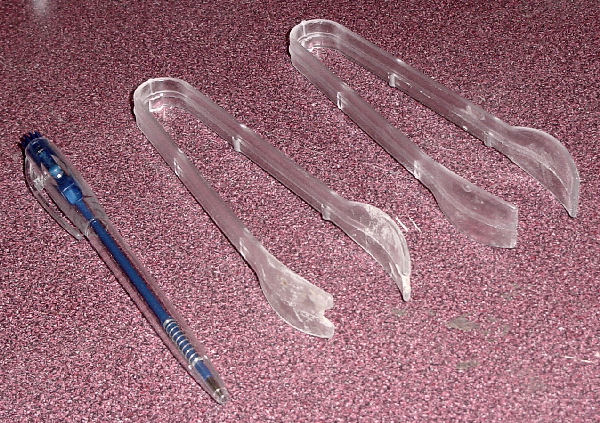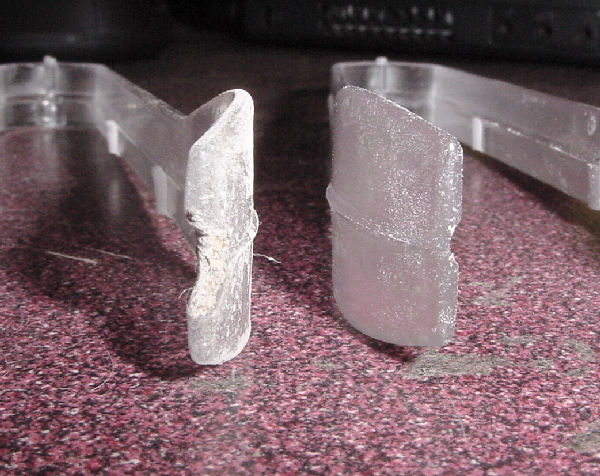Worm Farm
Worm Farming Made Easy
Getting Started - purchase your worms. Start with anywhere from 500 to 1000 worms. I know that sounds like a lot of worms - but it really isn't. I have 2 gliders and I started with 1000 worms. I highly recommend ordering worms online from Grubco or Worm Man Worm Farms. They cost under $15.00 for worms and shipping. Cost when purchasing from a pet shop is about $3.00 for maybe 30 worms.
Container - a container is necessary for your Worm Farm. You can purchase a 3-drawer plastic container at Wal-Mart for under $6.00. Take a small drill bit and drill holes all around the top edges of all the drawers. (You don't want to drill holes anywhere near the bottom or the mealies will escape!!) These will act as air holes and are very important. I also keep the drawers open just a little for some extra air source
Bedding - Worms, beetles and pupae all need bedding. I use oat meal (real oats - not cooked and not instant!) and oatmeal baby cereal. Use about 3/4 oats and 1/4 baby food cereal. That equals about 3 cups of oatmeal mix. Place about 1 1/2" for the beetle tray, 1' for the pupae tray and 1 1/2 to 2" for the worm tray. The worms and beetles will eat the oatmeal mixture. Some people also use cornmeal in their bedding.
Cleaning the Bedding - To clean the bedding in the worm drawer, you will have to remove all the worms. This isn't recommended until the worms get larger or you will throw out some of your tiny worms. To remove the worms, you can use a wire mesh sifter. It won't sift out the oatmeal, but will sift out the waste - which is called Frass. Wash and disinfect the drawer and dry thoroughly. You can leave the remaining oatmeal adding fresh oatmeal mix to the drawer. Some may feel more comfortable adding totally fresh oatmeal mixture. To do this, you will have to go thru the old mixture and pick out ALL the worms and place them in the fresh mixture. This can be a little time consuming!!!
It doesn't really need cleaned very often. About 3 times a year.
And in the beetle drawer - you just pick out the dead beetles and beetle remnants. I use tweezers for this job - Yuck! You can't replace the bedding in the beetle drawer as that is where your eggs are. You would be throwing away your next generation of worms - defeating the purpose of the farm. :) Also be careful throwing away any cardboard egg cartons, paper towels, etc. that have been placed in the drawer as beetles lay eggs on them.
Moisture - Carrots, lettuce, celery including the leaves, Spring Mix are the best things I have found for moisture - worms, beetles and pupae need something to drink, too! Replace the carrots, etc before they get dry. How long this takes will depend on how many worms or beetles are in a tray. Mine usually need fresh vegetables about every 2-3 days. It's not advisable to use fruit or anything that will cause mold to form. If mold should form in your farm - the worms will become toxic to your gliders and you will need to throw it all out, dis-enfect your container and start all over again. You can also put a small container of water in each drawer for moisture.
Worms (aka larvae) - You will start out with worms. It's not necessary to refrigerate them. They should remain at room temperature. The worms under go a series of about 10 to 20 molts during which they shed their exoskeleton (outer layer of skin). They burrow under the bedding during this time and stay toward the bottom of the drawer. They eat the oats and get moisture from the carrots. You can use these worms as your feeder worms when your suggies are hungry for a mealie snack.
Pupae - The second stage of worm farming is the pupae. During this time - the worm comes to the surface, and turns into a "C" shape. They are white, alien-looking and very ugly! Don't worry if you don't see them moving much at this stage. They should be separated and put into the 2nd drawer - if you have beetles, the beetles can and will eat the pupae. They will not need as much moisture as beetles and worms, so you don't need to put as many carrots in with them. The pupae then turn into beetles. This can take a couple of weeks. Suggies can also eat the pupae. As the pupae morph into beetles, you have to move the beetles into their own drawer or they will eat the remaining pupae. The pupae can actually stay in the same drawer as the larvae as long as you check it daily for beetles and move the beetles into the beetle drawer. Just be sure to keep enough moisture (carrots) for the worms. suggies also LOVE to eat the pupae. So, If you feel your meal worms are morphing to quickly - feed your suggies some of the pupae.
Beetles - The pupae then metamorphose into beetles. You cannot tell the males from the females. They can't fly, so you don't need to worry about them escaping the container. Put a piece of cardboard egg carton in the drawer with the beetles as they like to lay their eggs on something. Beetles lay their eggs usually about 9-24 days after they hatch. They lay eggs for up to 3 months before they die. A female beetle can lay up to 50 eggs per day during their lifetime. You won't be able to see the microscopic eggs or the tiny new meal worms. The first thing you will notice is it appears the oatmeal mixture is "moving". You should be able to see them in about 4 weeks.
The cycle will then begin all over again! I cannot believe how many worms I now have!!!
Mealworm Farming is a test in patience. As you can see, it can take a few months to get a farm up and running. You may have to replenish your "feeder" worms before you actually get your farm going strong.
Stage Time*
Egg 4-19 days
Larva 10 weeks. Visible after about a week
Pupa 6-18 (18-24?) days
Beetle 8-12 weeks
Tongs - You can use tongs for "hands-off" operation. I stole a pair of disposable lunchmeat tongs from a work luncheon.
 | Disposable lunch meat tongs are sized perfectly for use with worms |
 | Use a small round file or drill to make wormlike indentations in the ends to hold a squirming wormie. |
SEE ALSO
A better meal worm farm UPDATE
Meal worm mites be gone
Search for Worm Farm on all of Sugarglider.com.
|
